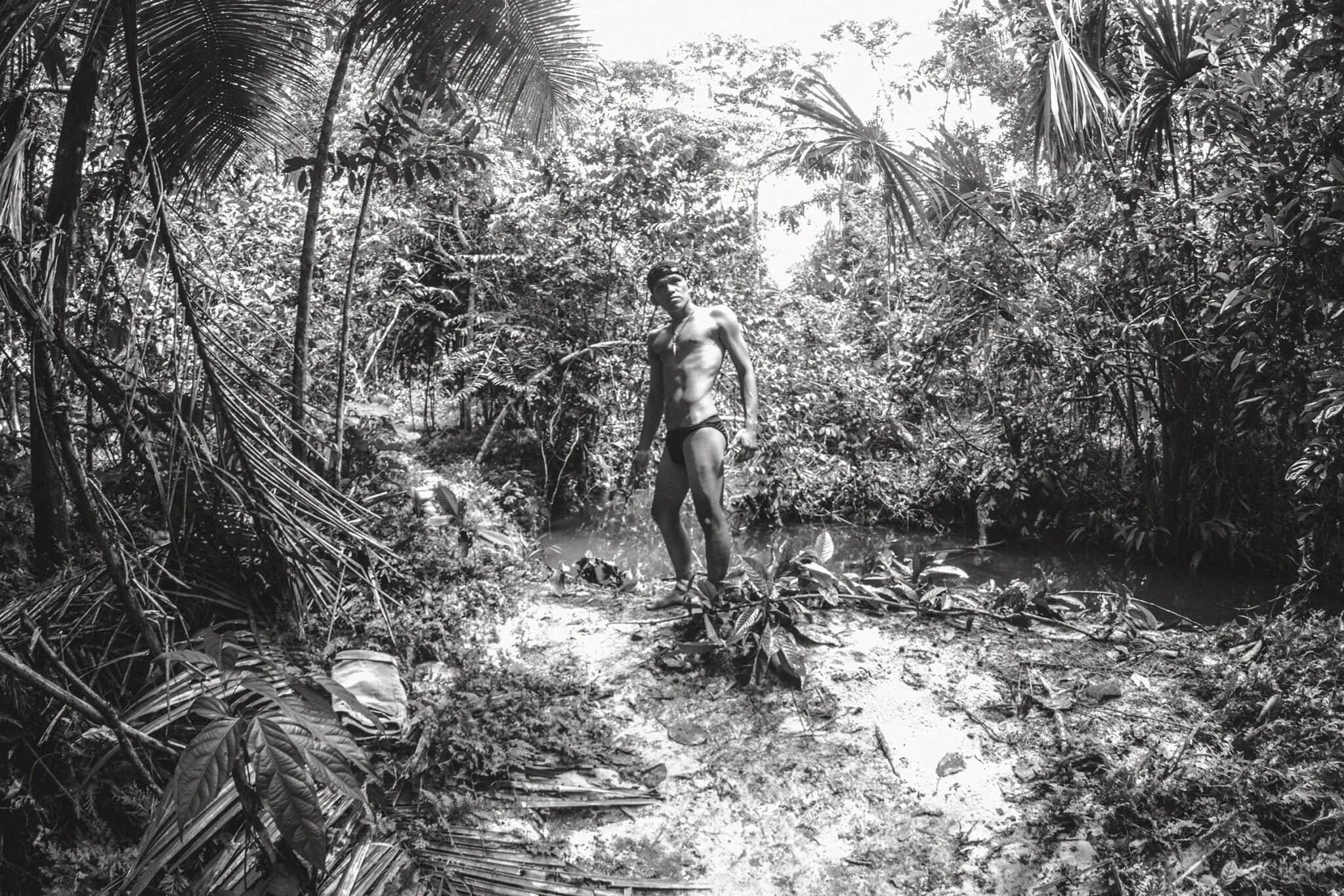
Strip the jungle
“Inon Sani” means “the jaguar man who illuminates everything.” That’s how the Peruvian photographer German Llerena, raised in Iquitos, the gateway to the Peruvian Amazon, decided to call himself. “I realize that I have been raised in a way where the body has been a very familiar thing since I was little,” he says. And also: “My mom, for example, slept with her tits out, my dad walked around the house in his underwear.”
Little by little he began to portray bodies. Especially men. Especially connecting with nature, which he thanks. Although he is out of his control and never knows if it will be cloudy or the sun will rise, he says it always ends up happening that nature plays in his favor. And it was thus, exploring small towns and bodies, between talks and teachers, that Inon discovered what he wanted to do: “I’m going to strip the jungle,” he promised.
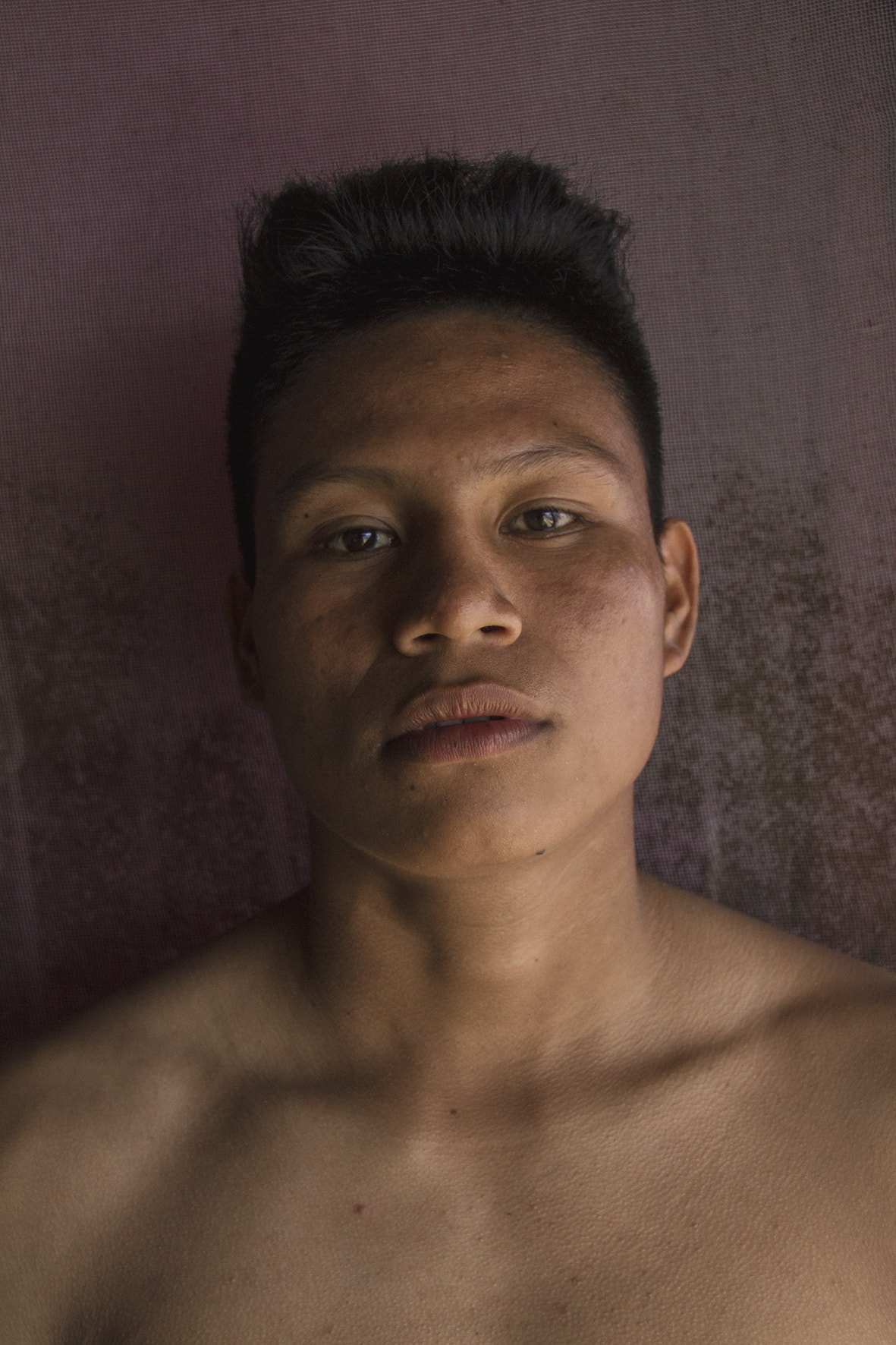

How was your way to the photos you took today?
I am from Iquitos, I was born here and I lived here until I was eighteen. It is a very small city and in art, not much was happening, so I decided to try what was happening in Lima. I started working in casting. We filmed and also took pictures of chibolos, we played with the cameras, we went out in the neighborhood. I do not appear in the photos, because I took them. My friends have kept the photos, we were 15 years old and when I see the photos it seems crazy to me because they look like the ones I take now.
In other words, unconsciously, too, because it has also been in a very organic way. When I left Lima I started looking for those kinds of jobs. I feel that the process has been very healing. I could sleep with my camera, I could be with it all the time I am with it because now I am in Iquitos. It’s all so cool that you never know what to find.

In what you do there seems to be a mixture of the documentary and the personal.
I talk a lot about my sexuality through my photos, I feel that there is something that makes me feel. There is always this little sexual impulse in what I portray, going a little bit beyond normal. Here in the jungle, it’s cool because it correlates with nature. I love those two languages together. Iquitos is in the heart of the Peruvian Amazon, low jungle, tropic, the contrast with the city is enormous. Iquitos is something else, it is a city from the rubber era that has later expanded. It is little and big at the same time. There is no road, you have to get here by plane or by boat. You must go to Pucallpa, you ride the Henry that goes up the Ucayali River. The trip can last between 5 and 7 days navigating through the Ucayali that is in Marañón and these two rivers meet and form the Amazon. It’s a crazy trip. I’ve just done it right now, never have. But I finally did it in January, when I went to spend the New Year in Pucallpa.

You said that you talk about your sexuality through photography interspersed with the landscape, how did you realize that all these things could come together in your work?
I was doing social photography in 2011, 2012, around there, for a newspaper here. I was an assistant for a girl who has a blog. We met, she wavered about my job and she hired me. She also instructed me a lot. There I had friends who did photography. All cool with the photo, but I wanted to take it to the next level. Towards an artistic wave, I don’t know. I am very loose, I approach, and so on. I’m kind of hyperactive, too. It’s like my personality, I can’t be still.
I began to inquire about what had been done in Amazonian photography, to investigate a little of that market as well. I ran into a painter friend in a swimming pool, accidentally. He helped me a lot on the subject of art references.
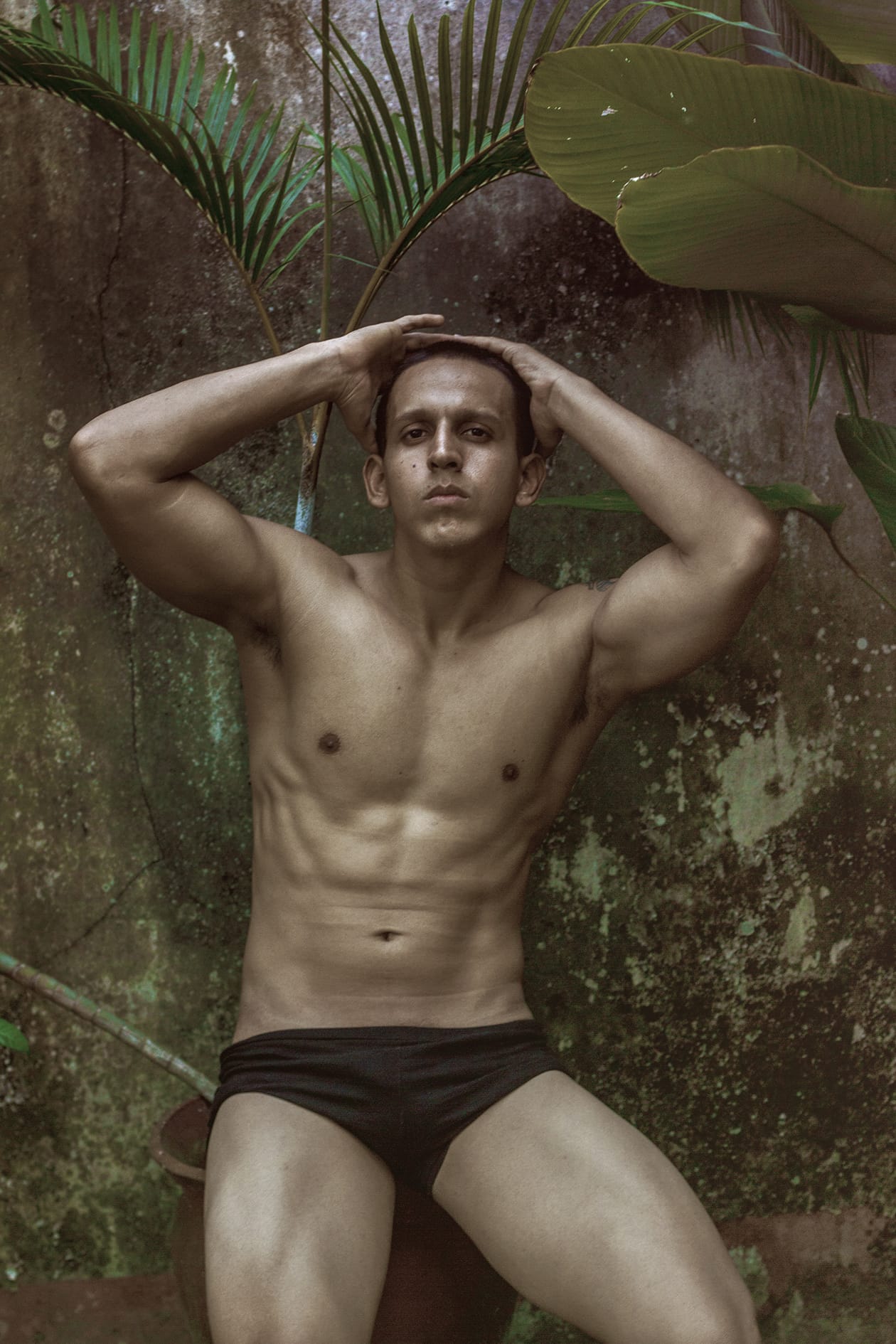
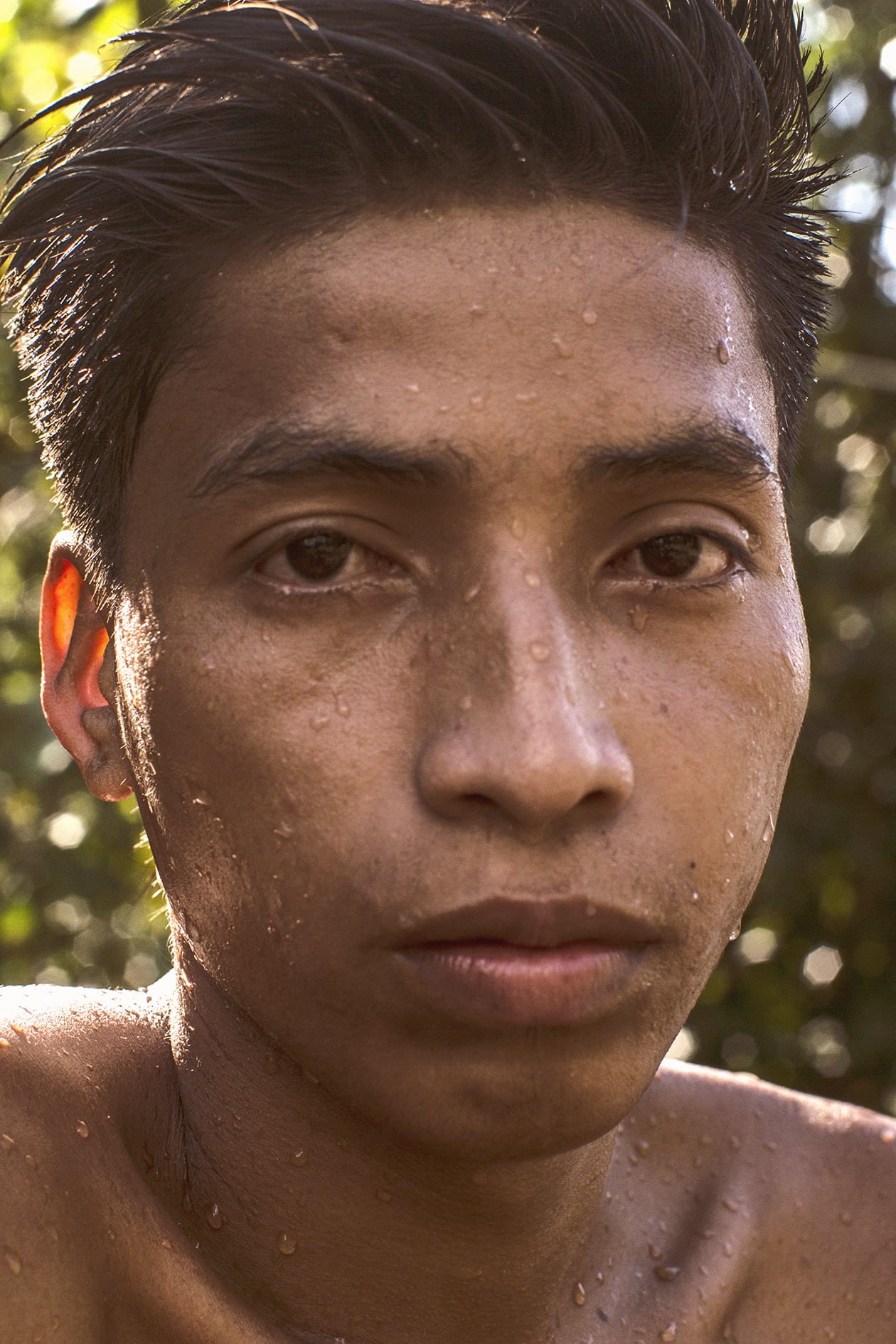
He had seen quite a few works by various photographers who had peculiarly portrayed Iquitos, in an unprecedented way. It was intuitive, we kind of lined up. That time I stayed for about a year, that talk was very nourishing and I said to myself: “I’m going to strip the jungle.” Not only phallic, not only the man as an object, the penis. But to undress it. I feel that I have naked not only the jungle but the people in some way. It happens consciously or unconsciously, but quite naturally. It is the energy that is reflected in the result of my work.
That year I remember that I was going around like this with my camera everywhere, visiting villages. It happens to me, for example, with the boys that I sometimes portray. There may be flirtations with people. You get into a van and find a super hot collector. And I think: “If only he could take off his polo shirt, the photo would be there.”
I think it was also a way of getting to know me, the photo also leads me to many crazy situations. For example: go and take photos in the (port) of Callao. Some crazy neighborhoods, a bit like gangsters…
I take a photo depending on how you open to the camera, I also open the frame if you give me more permission: “hey, can you take off your polo shirt?” The frame opens according to how you could open with me, according to how trust develops. In the end, I finished the documentary of that process, of that portrait, of that situation. I like that relationship. I believe that beyond what it contributes and how healing they can be not only for me but also for my environment. A lot of people have an imposing personality, but I did get a lot of people who don’t feel safe. I always put myself a little bit in the role of models, of the people I portray.
I love the human body of man, I use language with them. Somehow I feel like these guys have an energy of mine. I want to lower the tension, “relax a little more.” It ends up coming out something cool. They always ask me “how do you make it look sexy?” But I don’t know, it’s not an after sex or anything. There is still sexual tension at all times.
And how is the relationship with nature?
Nature blends in with everything, with the human, with the body, with the rain, with the weather, with the sun, with the light. Documentary photography narrates this portrait in a way.
I am in control of my characters, of my model, but I am not really in control of nature. So I don’t know what things are going to be, what cloud is in my favor, the light. Sure, I calculate the light but it would rain, or the clouds are very clear. But sometimes, as I say, everything is so connected and nature ends up like wow! As it is also in collaboration, the universe, nature, are in my favor.
But it could be said that the specific focus of my background ends up being the cloud. Like, in the end, the human being ends up being an element that accompanies this giant, beautiful, blue cloud. A bit romantic the matter, but hey: it happens like this.
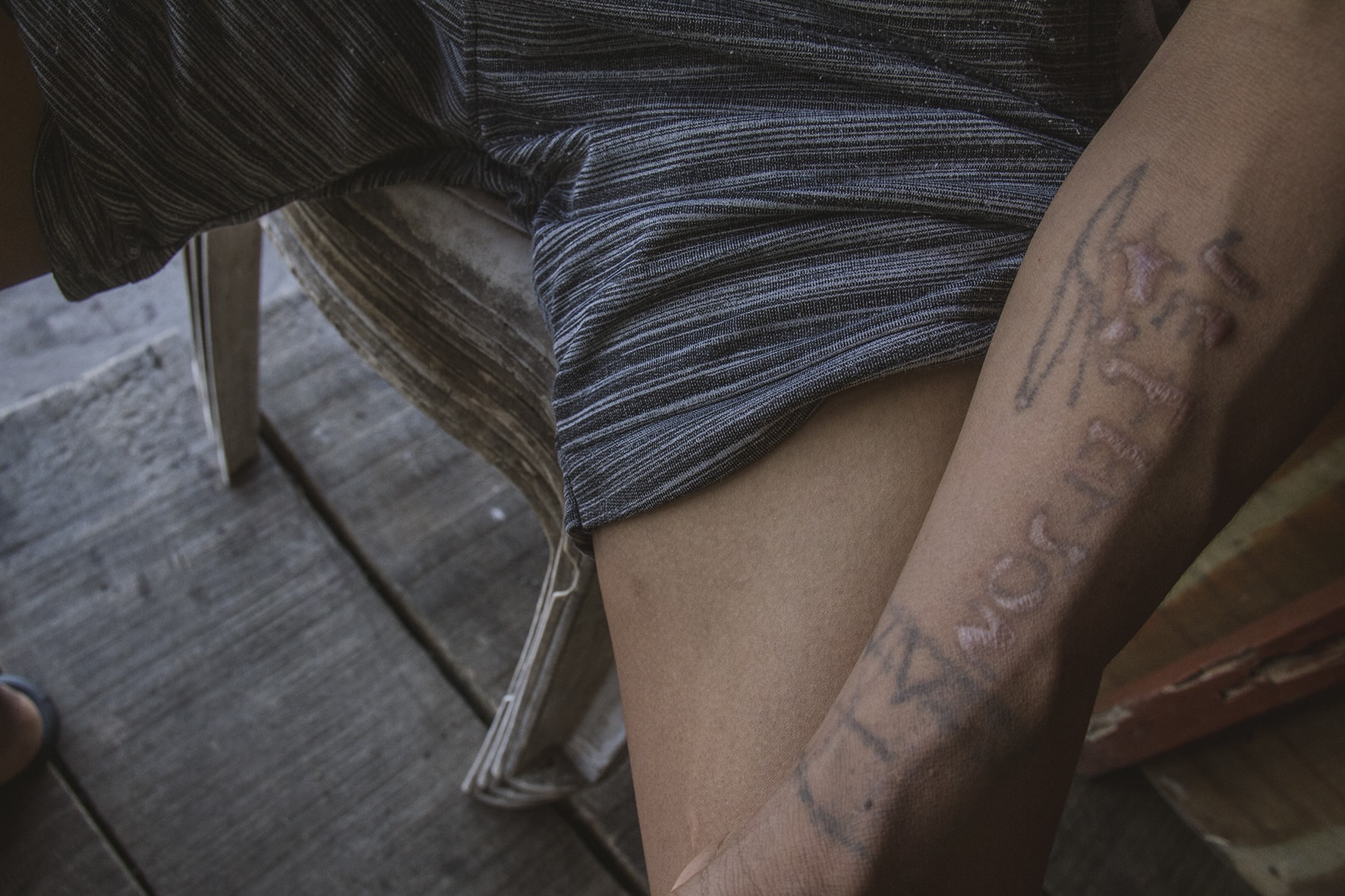
Do you feel that after taking pictures the subjects you photograph are transformed?
I think that sometimes, people achieve an experience that transmutes the way they perceive themselves, not only themselves but also in how they perceive the world and their environment, life itself. It is like, without realizing it, they feel deified. With some a type of inner power opens up, of trust, they feel beautiful, and the reality they know may become more secure, more beautiful.


